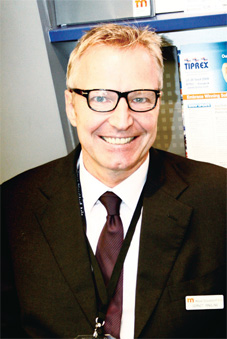
2010年1月1日起,东盟6个老成员国棗文莱、印度尼西亚、马来西亚、菲律宾、新加坡、泰国之间将有超过90%的产品实行零关税,而4个新成员国越南、老挝、柬埔寨和缅甸,90%的商品将于2015年实现零关税。无疑,这也拉动了该地区塑料业的发展。
This year marked the beginning of intensified trade among members of regional economic blocs. On the first day of 2010, six members of the Association of Southeast Nations (ASEAN) -- Brunei Darussalam, Indonesia, Malaysia, Philippines, Singapore and Thailand ?started tariff-free import and export of almost all goods traded among them. With additional 7,881 tariff lines eliminated, 54,457 or 99.11% of tariff lines traded under the Common Effective Preferential Tariffs for ASEAN Free Trade Area (CEPT-AFTA) are now down to zero tariff. The reduction of tariff lines covered almost all products ?from iron and steel, plastics, machinery and mechanical appliances, chemicals, prepared food stuff, paper, cement , ceramic and glass products, among others. The remaining four ASEAN countries ?Vietnam, Cambodia, Laos, and Myanmar ?are not affected by the tariff reduction as they are newer members and have less developed economies. However, they will be required to take on the same path by 2015.  While the free trade area has been received with mixed reactions from companies in the region, others welcome it seeing a bigger potential market for their products. ASEAN Secretary General Surin Pitsuwan said that this recent move will serve as catalyst for the development of a single market and production base. The ASEAN bloc is a market of 580 million people or 8.7% of the world population with combined Gross Domestic Product (GDP) valued at $1.5 trillion. The import value covered by the additional 7,881 tariff lines amount to $22.7 billion or about 12% of the ASEAN-6抯 total imports from within ASEAN. The ASEAN-China Free Trade Area (ACFTA) also took effect on 1 January and establishes a free trade area among the 11 nations. The ACFTA creates an economic region with 1.7 billion consumers, making it the biggest free trade area in terms of population. Combined regional GDP reached about $2 trillion and total trade of $1.23 trillion make ACFTA a vast potential market worth exploring. Plastics sector gears up The ASEAN free trade area draws mixed response from the plastics industry in the region. In the Philippines, the Philippine Plastic Industry association (PPIA) has proposed that the government reduce the tariff on plastic resins to make the plastics industry competitive. PPIA President Alfonso Siy said that reducing the MFN tariff rates on plastic resins to zero percent will make up for the adverse effect on the removal of tariff for finished plastic goods. On the other hand, the Thai plastic resin industry is seeing the beneficial impact of AFTA as it provides easy access to other Southeast Asian markets. Thailand is currently the world抯 14th largest resin exporter, with annual shipment of 3 million tonnes a year or worth $5.5 billion annually. Singapore has become a major supplier of engineering plastics as well as polyethylene and polypropylene used in the packaging industry.
While the free trade area has been received with mixed reactions from companies in the region, others welcome it seeing a bigger potential market for their products. ASEAN Secretary General Surin Pitsuwan said that this recent move will serve as catalyst for the development of a single market and production base. The ASEAN bloc is a market of 580 million people or 8.7% of the world population with combined Gross Domestic Product (GDP) valued at $1.5 trillion. The import value covered by the additional 7,881 tariff lines amount to $22.7 billion or about 12% of the ASEAN-6抯 total imports from within ASEAN. The ASEAN-China Free Trade Area (ACFTA) also took effect on 1 January and establishes a free trade area among the 11 nations. The ACFTA creates an economic region with 1.7 billion consumers, making it the biggest free trade area in terms of population. Combined regional GDP reached about $2 trillion and total trade of $1.23 trillion make ACFTA a vast potential market worth exploring. Plastics sector gears up The ASEAN free trade area draws mixed response from the plastics industry in the region. In the Philippines, the Philippine Plastic Industry association (PPIA) has proposed that the government reduce the tariff on plastic resins to make the plastics industry competitive. PPIA President Alfonso Siy said that reducing the MFN tariff rates on plastic resins to zero percent will make up for the adverse effect on the removal of tariff for finished plastic goods. On the other hand, the Thai plastic resin industry is seeing the beneficial impact of AFTA as it provides easy access to other Southeast Asian markets. Thailand is currently the world抯 14th largest resin exporter, with annual shipment of 3 million tonnes a year or worth $5.5 billion annually. Singapore has become a major supplier of engineering plastics as well as polyethylene and polypropylene used in the packaging industry.  Air Jordan 33 XXXIII
Air Jordan 33 XXXIII
 iConnectHub
iConnectHub
 Login/Register
Login/Register Supplier Login
Supplier Login


























